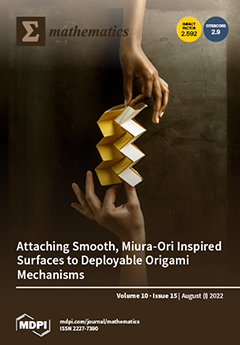Pattern recognition is the computerized identification of shapes, designs, and reliabilities in information. It has applications in information compression, machine learning, statistical information analysis, signal processing, image analysis, information retrieval, bioinformatics, and computer graphics. Similarly, a medical diagnosis is a procedure to illustrate
[...] Read more.
Pattern recognition is the computerized identification of shapes, designs, and reliabilities in information. It has applications in information compression, machine learning, statistical information analysis, signal processing, image analysis, information retrieval, bioinformatics, and computer graphics. Similarly, a medical diagnosis is a procedure to illustrate or identify diseases or disorders, which would account for a person’s symptoms and signs. Moreover, to illustrate the relationship between any two pieces of intuitionistic hesitant fuzzy (IHF) information, the theory of generalized dice similarity (GDS) measures played an important and valuable role in the field of genuine life dilemmas. The main influence of GDS measures is that we can easily obtain a lot of measures by using different values of parameters, which is the main part of every measure, called DGS measures. The major influence of this theory is to utilize the well-known and valuable theory of dice similarity measures (DSMs) (four different types of DSMs) under the assumption of the IHF set (IHFS), because the IHFS covers the membership grade (MG) and non-membership grade (NMG) in the form of a finite subset of [0, 1], with the rule that the sum of the supremum of the duplet is limited to [0, 1]. Furthermore, we pioneered the main theory of generalized DSMs (GDSMs) computed based on IHFS, called the IHF dice similarity measure, IHF weighted dice similarity measure, IHF GDS measure, and IHF weighted GDS measure, and computed their special cases with the help of parameters. Additionally, to evaluate the proficiency and capability of pioneered measures, we analyzed two different types of applications based on constructed measures, called medical diagnosis and pattern recognition problems, to determine the supremacy and consistency of the presented approaches. Finally, based on practical application, we enhanced the worth of the evaluated measures with the help of a comparative analysis of proposed and existing measures.
Full article





